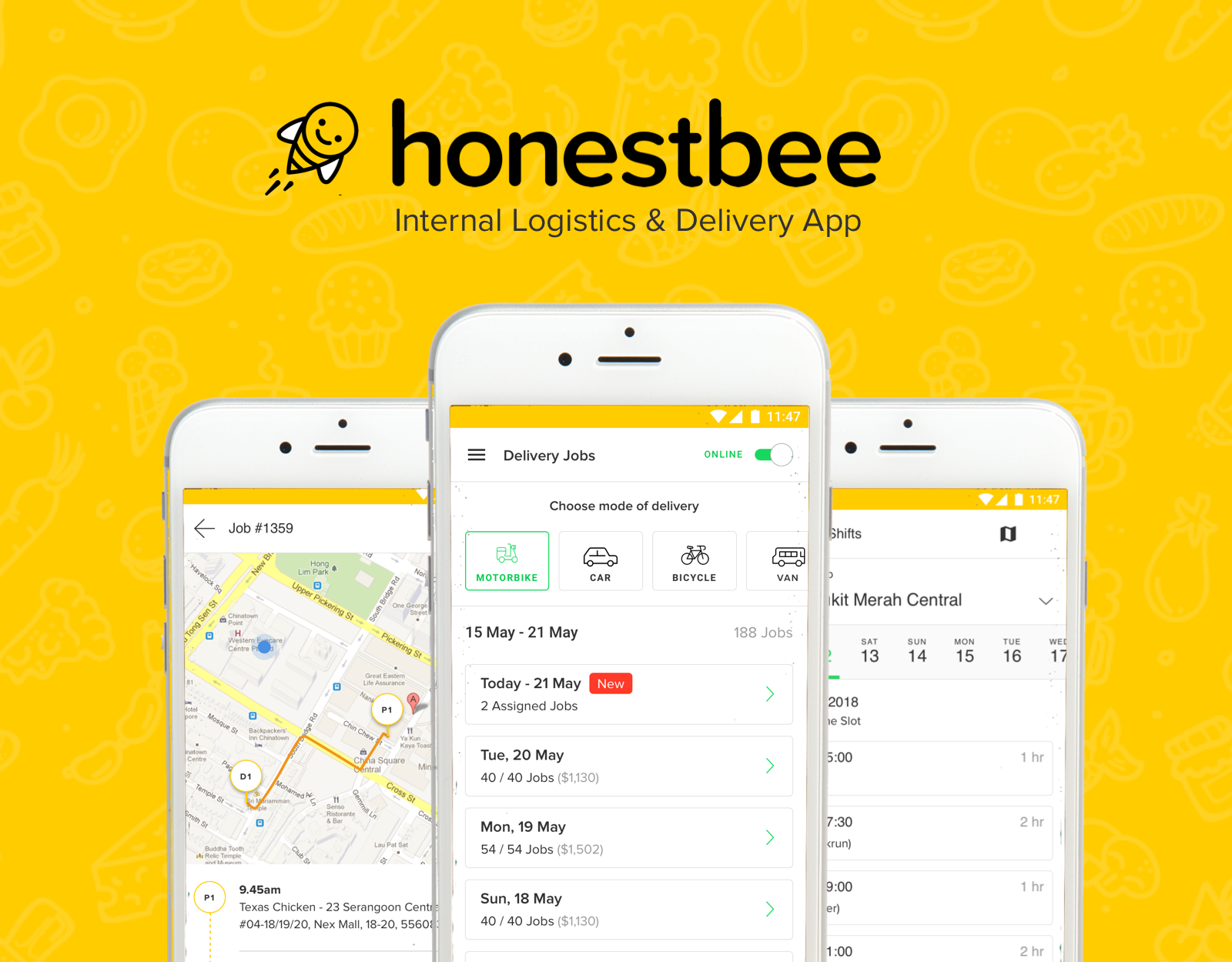
Background
Honestbee was an online grocery and food delivery service, as well as a parcel delivery service for its B2B clients. The company works with supermarkets and retailers to deliver goods to customers using its store pickers, delivery fleet and mobile apps. While based in Singapore, it also operates in seven other markets across Asia.
Problem
The DeliveryBee app is an internal logistics app used by our delivery drivers in B2B and B2C operations, such as food, parcel and laundry delivery. Since launch, users have given feedback regarding how it was difficult and troublesome to book their shifts. Many of them have found it hard to look through the different timings across the different delivery hubs. My task was to improve the overall shift-booking experience for our delivery workers.
Goals
Together with another colleague on the design team, our job was to revamp the DeliveryBee app to stay in line with business interests and end-user needs. My goals were to:
- Reduce frustration for existing drivers to book shifts
- Reduce rate of cancelling shifts
- Give drivers a faster and simpler experience in booking shifts
- Help hub managers improve the way shifts are assigned

Approach
- Interview delivery workers on the ground and find out how they book shifts via the delivery bee app, any unresolved paint points, as well as unspoken rules, cultural norms that affect the driver’s decisions
- Interview hub managers to understand how they schedule, cancel and reassign shifts, as well the problems they face
- Collate all unresolved pain-points that create friction through the booking process for the drivers, and the shift assignment for the hub managers
- Find inspiration, or elegant solutions to simplify the process of booking shifts and reduce rate of shift cancellation.
- Come up with different solutions and test each of them with delivery workers
- Keep iterating until until you get a satisfying solution
Interviews with Users
After interviewing with 18 delivery workers at 3 different delivery hubs, most of them have feedback that they found it hard to look through the different timings across the different delivery hubs. I decided to inquire further by observing how they book their upcoming shifts. I noted that delivery workers tend to stay at the same hub and book as many delivery slots at the hub of their choice within the same day. Very few users would actually work at more than 1 hub in the same day. So when users were using the app to book their shifts, they tend to look for the right hub first, before looking at the different time slots available. The problem with the booking interface then, however, was that it sorted shifts by date and time first, before sorting by the available locations (as shown in the image below). Hence many users found it difficult and troublesome to sift through the different dates and timings to book their desired shift.
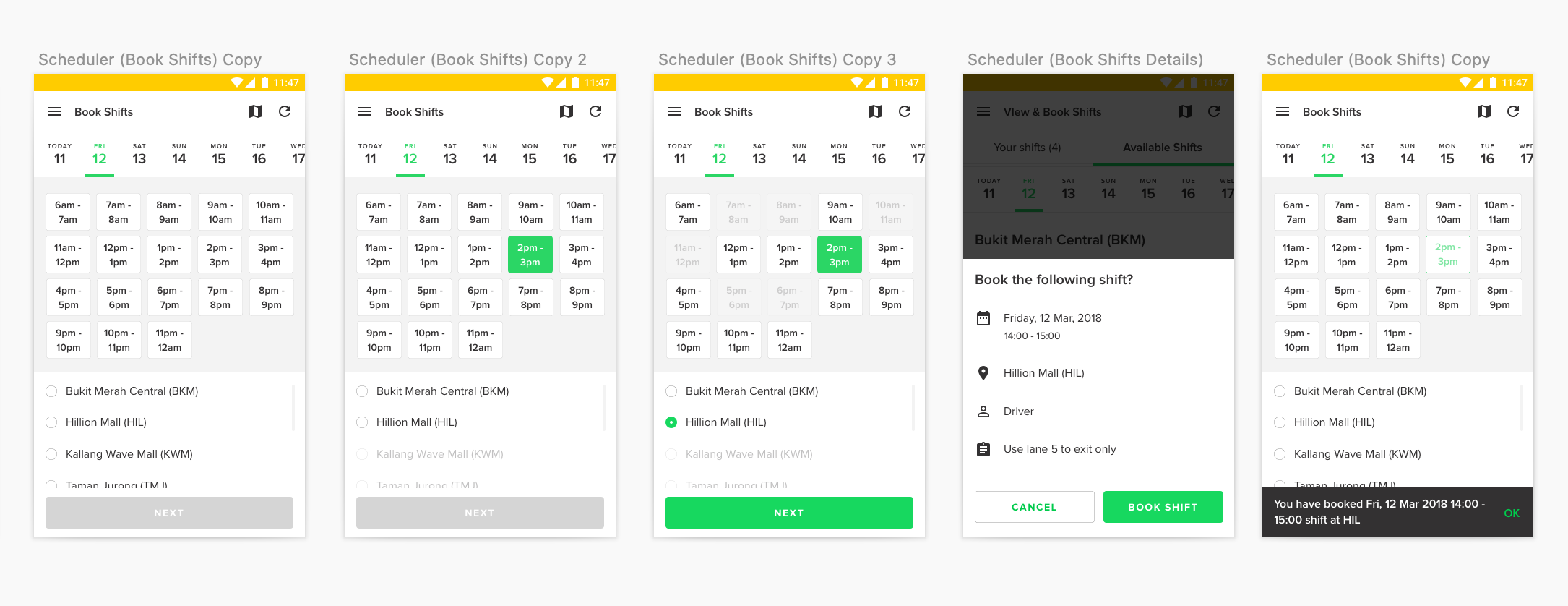
Mockups
After collating the interview findings, I wanted to try reworking the UI by changing the way shifts were being displayed in the booking screen. Instead of sorting the shifts based on time first, then by location, I decided to make sort by location instead. To confirm my findings, I came up with 3 prototypes which I would then use to test with the delivery workers later on.
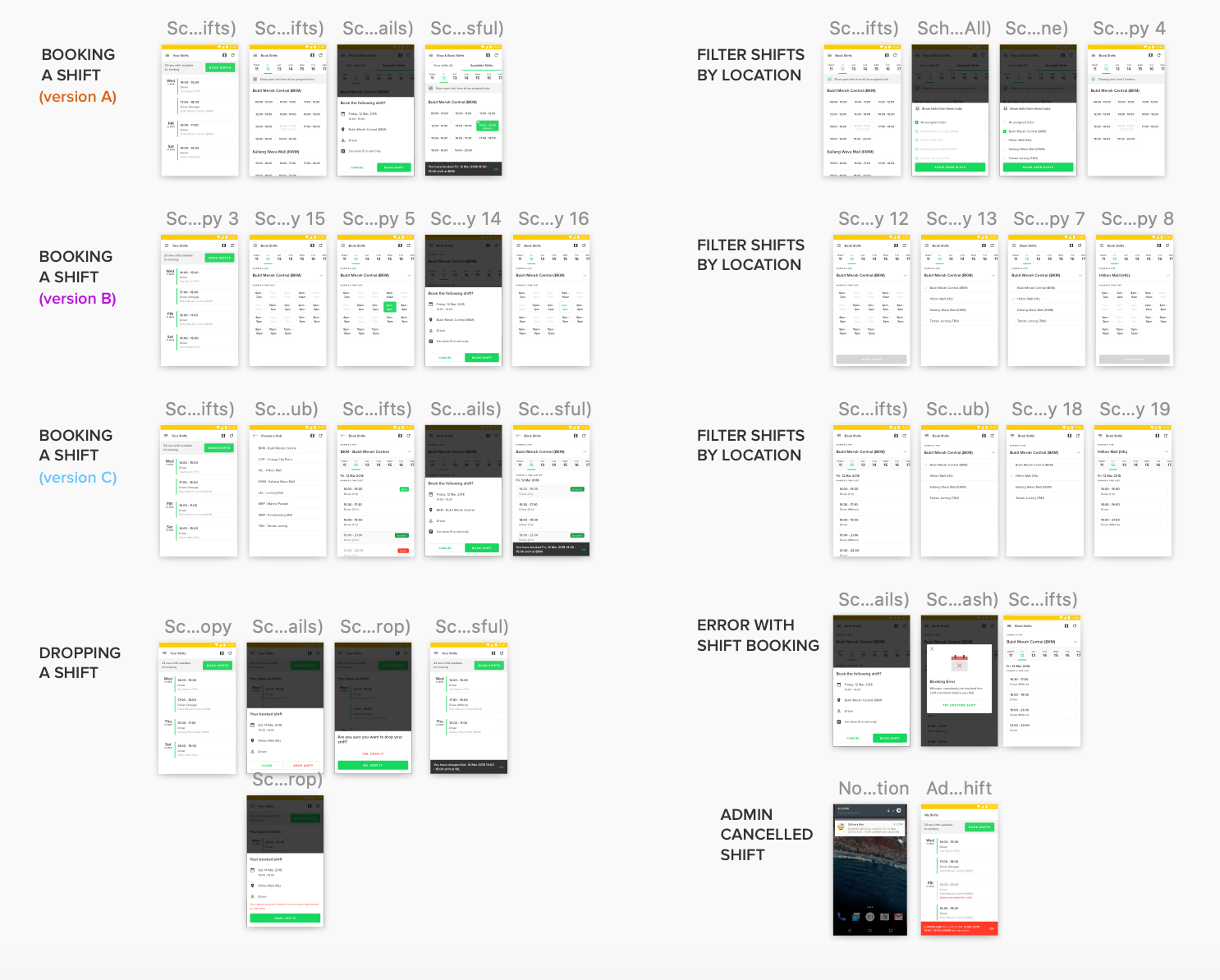
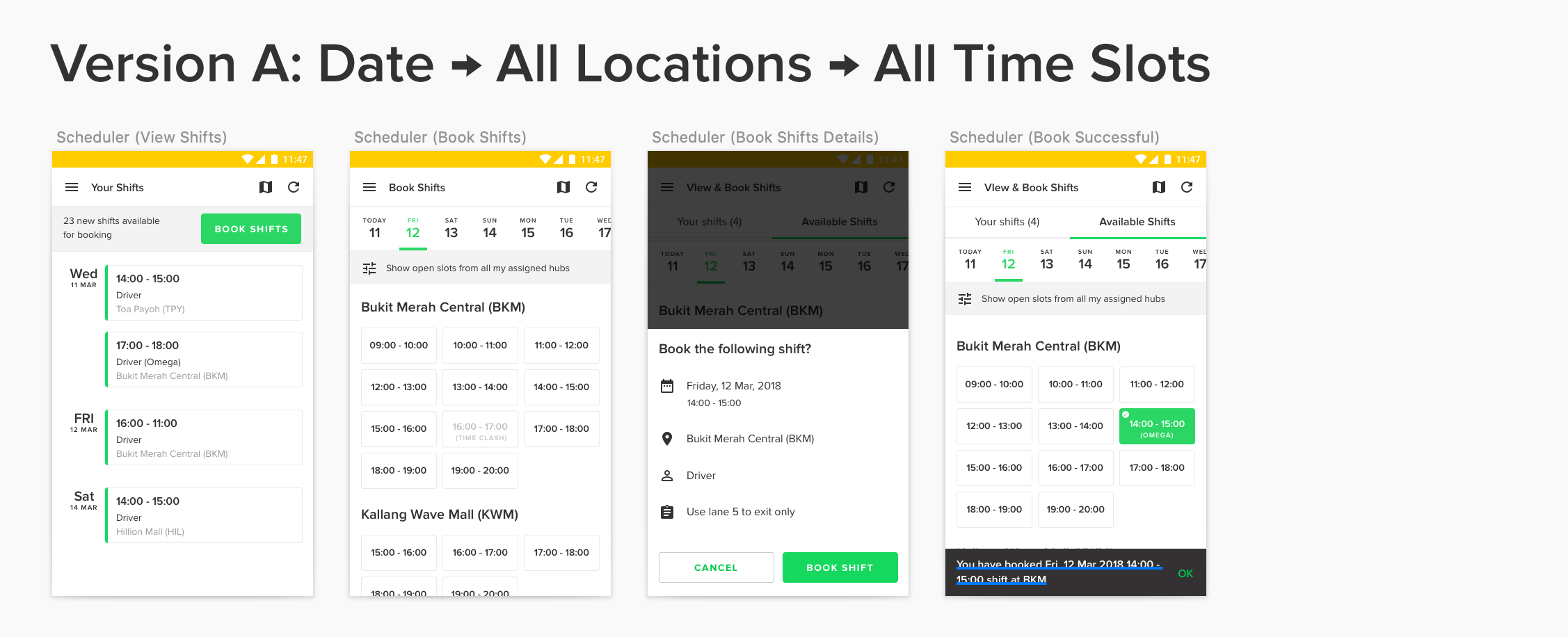
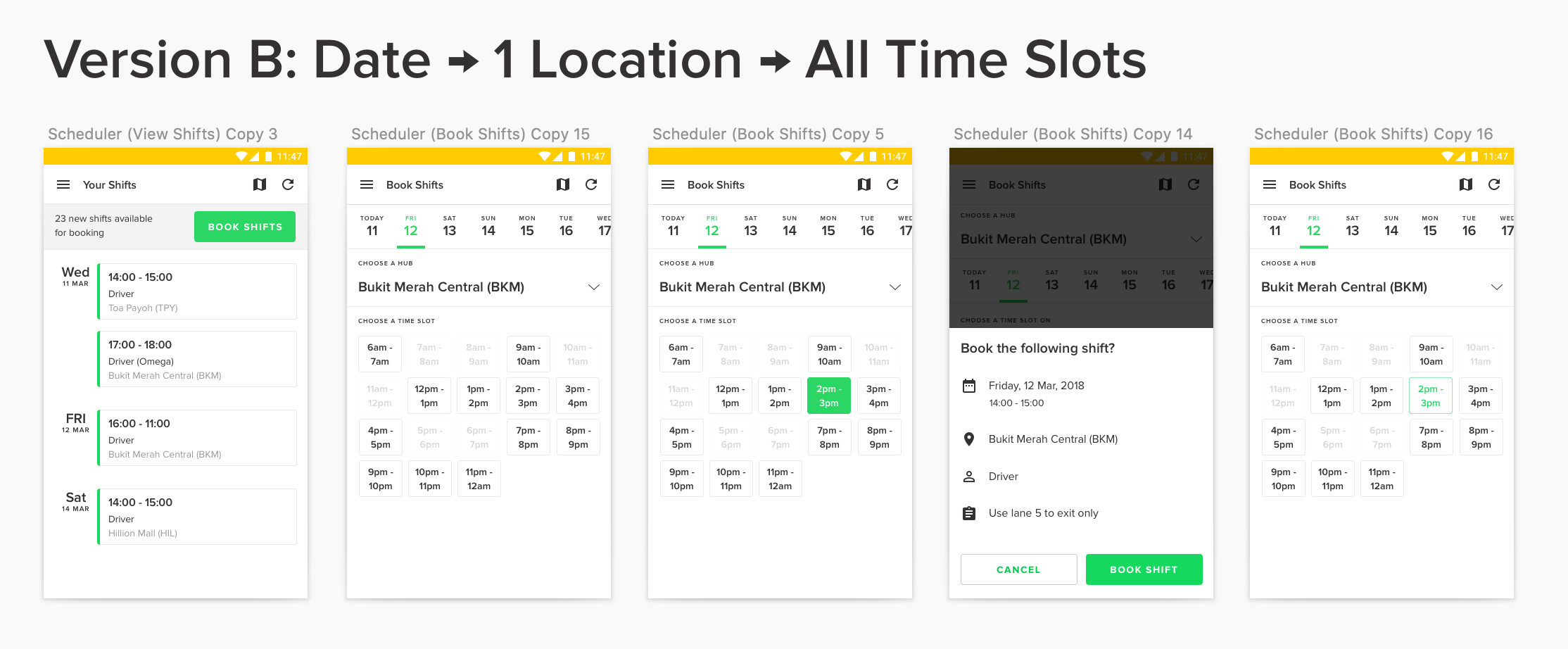
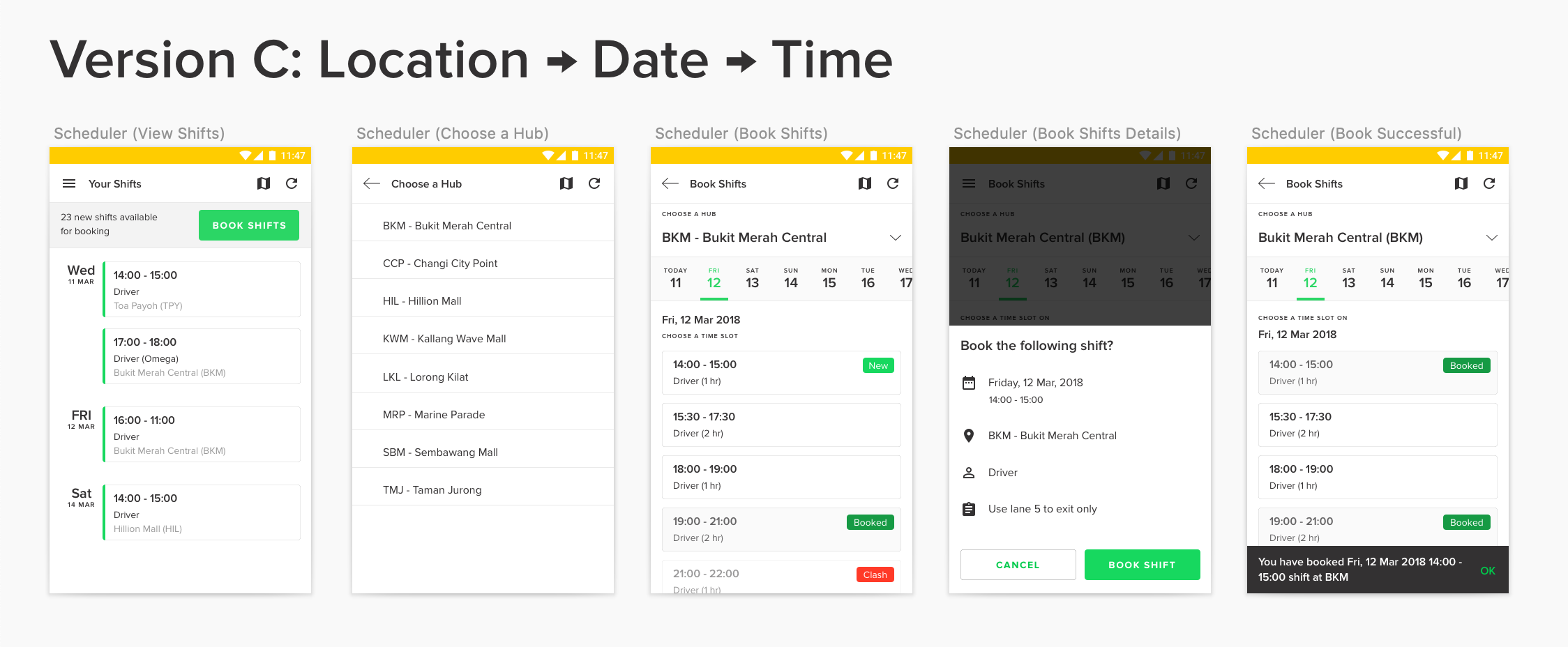
Testing Prototypes and Findings
I made an interactive prototype on InVision for each of the 3 prototypes and invited 5 delivery workers to try them out by giving them a task that involved booking a delivery slot. Every one of them preferred the version with that sorted by shifts by location first as they tend to prioritise finding the hub of their choice before looking at the specific date and time slots.
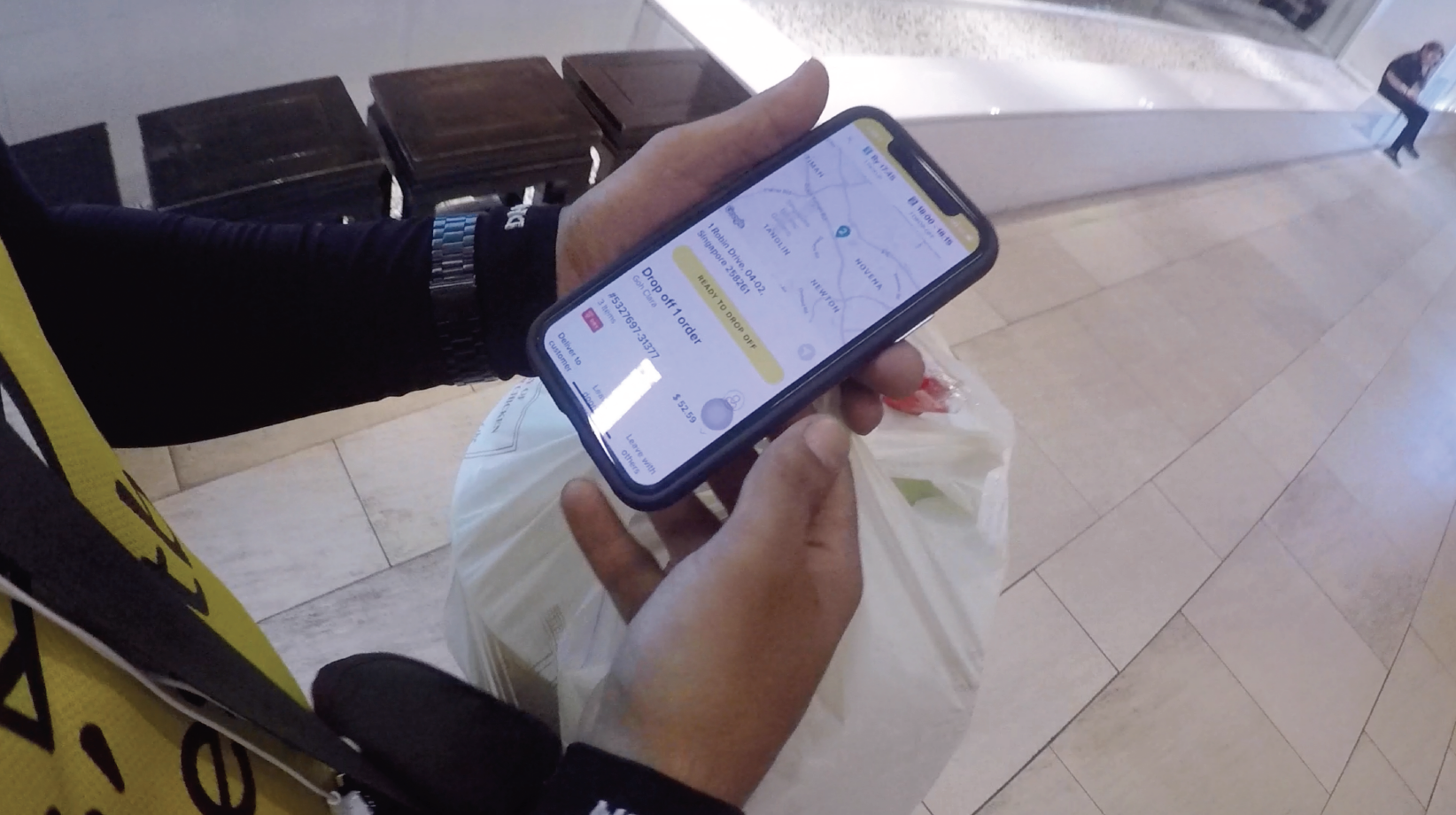
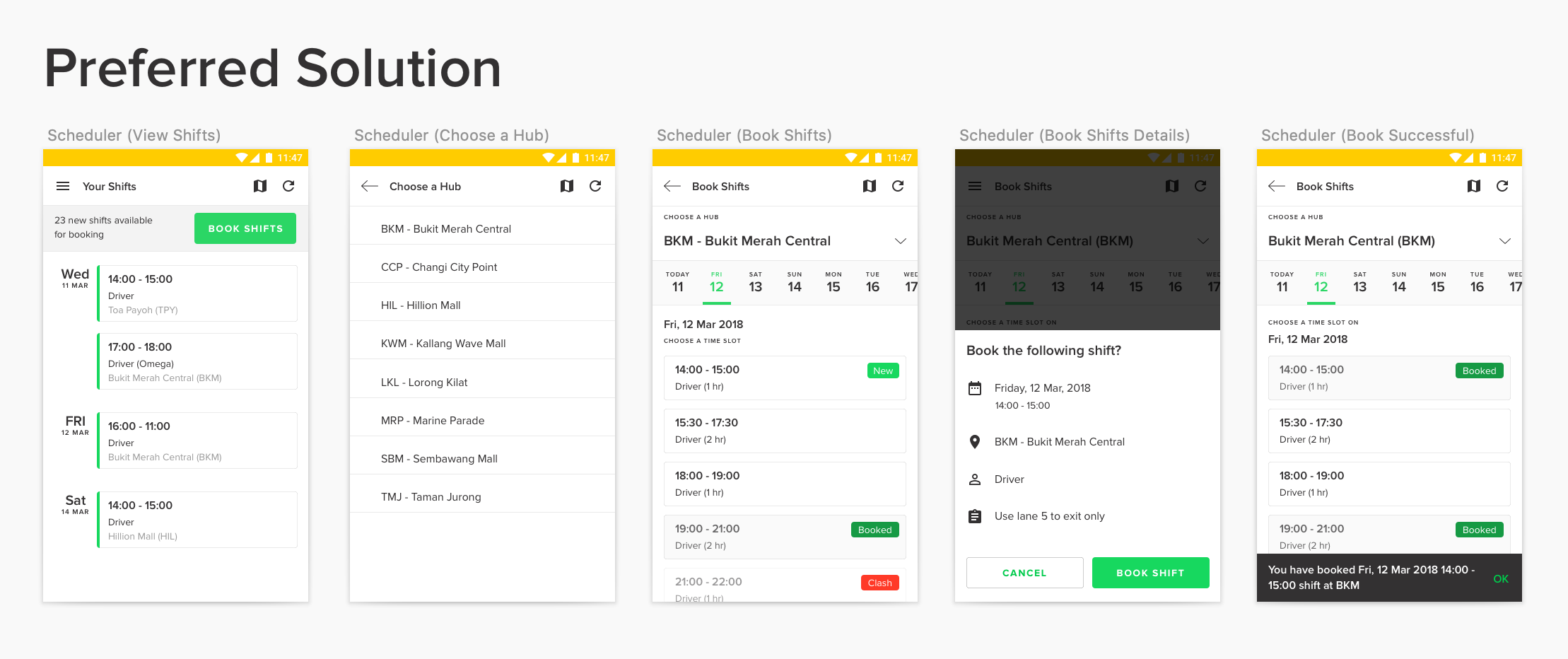
I made an interactive prototype on InVision for each of the 3 prototypes and invited 5 delivery workers to try them out by giving them a task that involved booking a delivery slot. Every one of them preferred the version with that sorted by shifts by location first as they tend to prioritise finding the hub of their choice before looking at the specific date and time slots.
Final Thoughts
User feedback helps to improve design outcomes and speed up design iteration towards more viable solutions. Yet the truth is that as designers, we don’t usually get to talk to our users every week. On the other hand, the driver support staff and fleet managers who work on the ground tend to communicate with our users and receive their feedback on a more frequent basis. Even if you are not able to schedule a meeting with the users directly, try to talk to the support staff and record their findings instead. Chances are, they know what needs to be fixed next better than you do.
